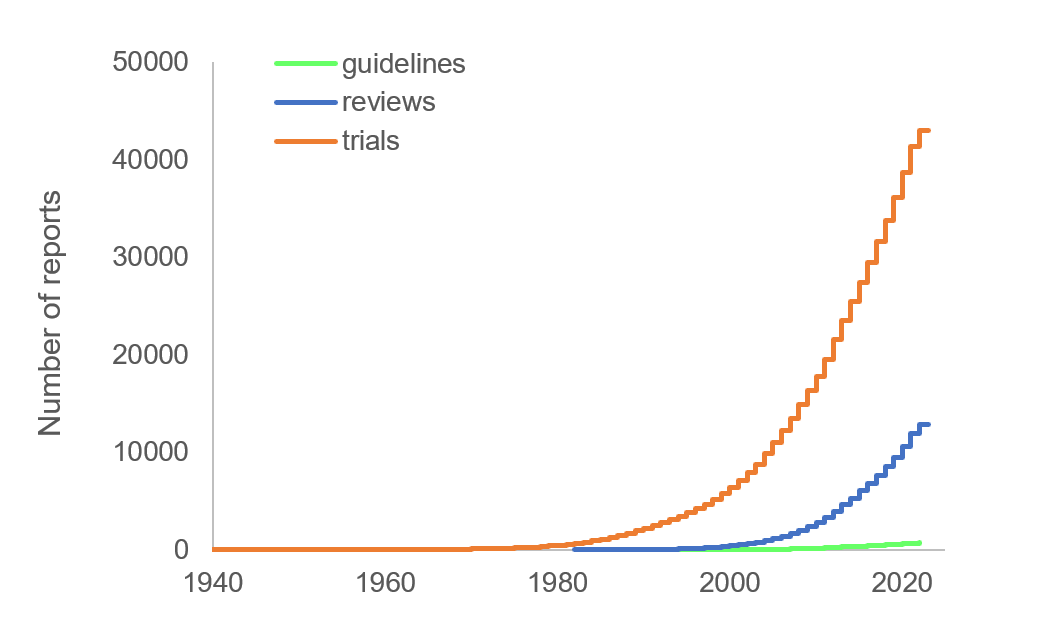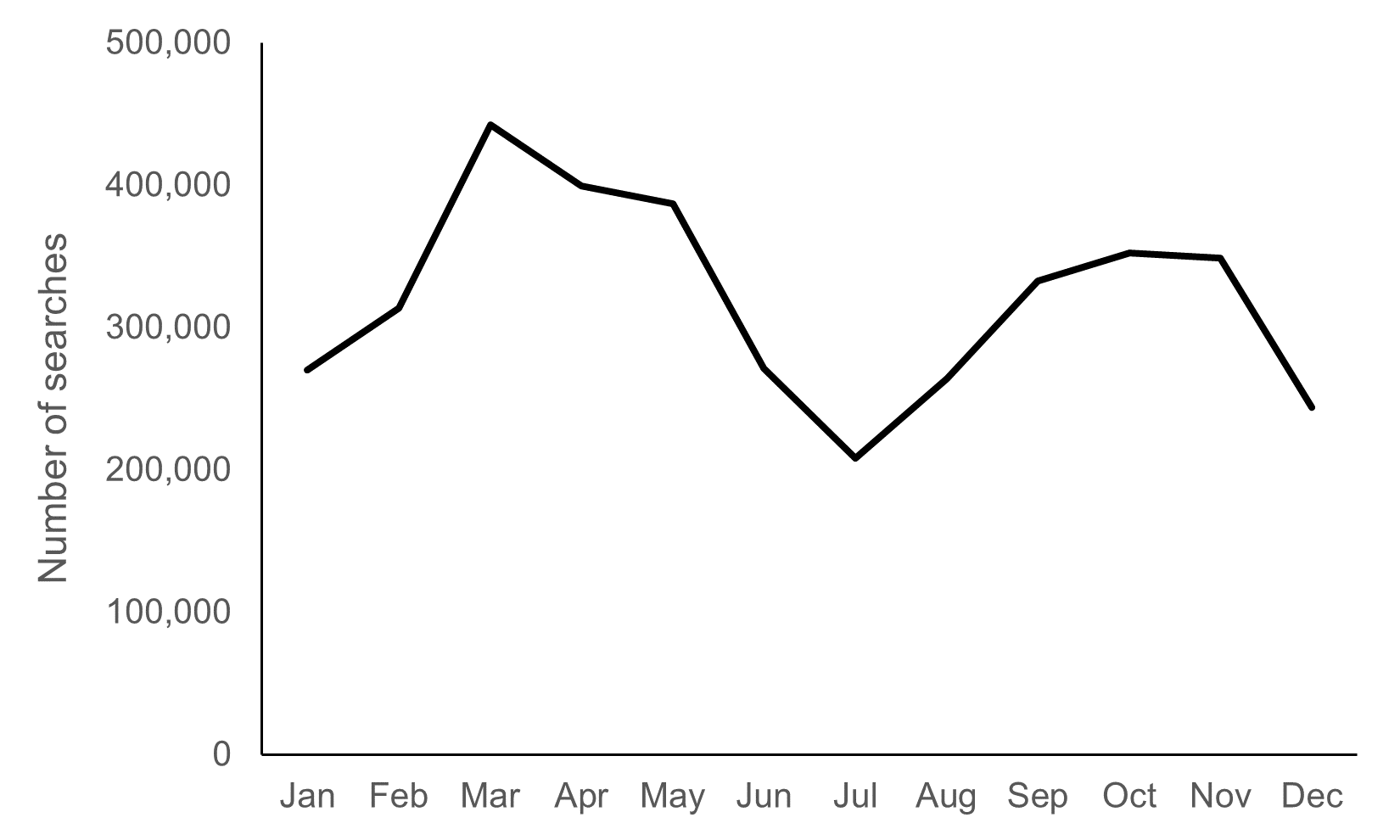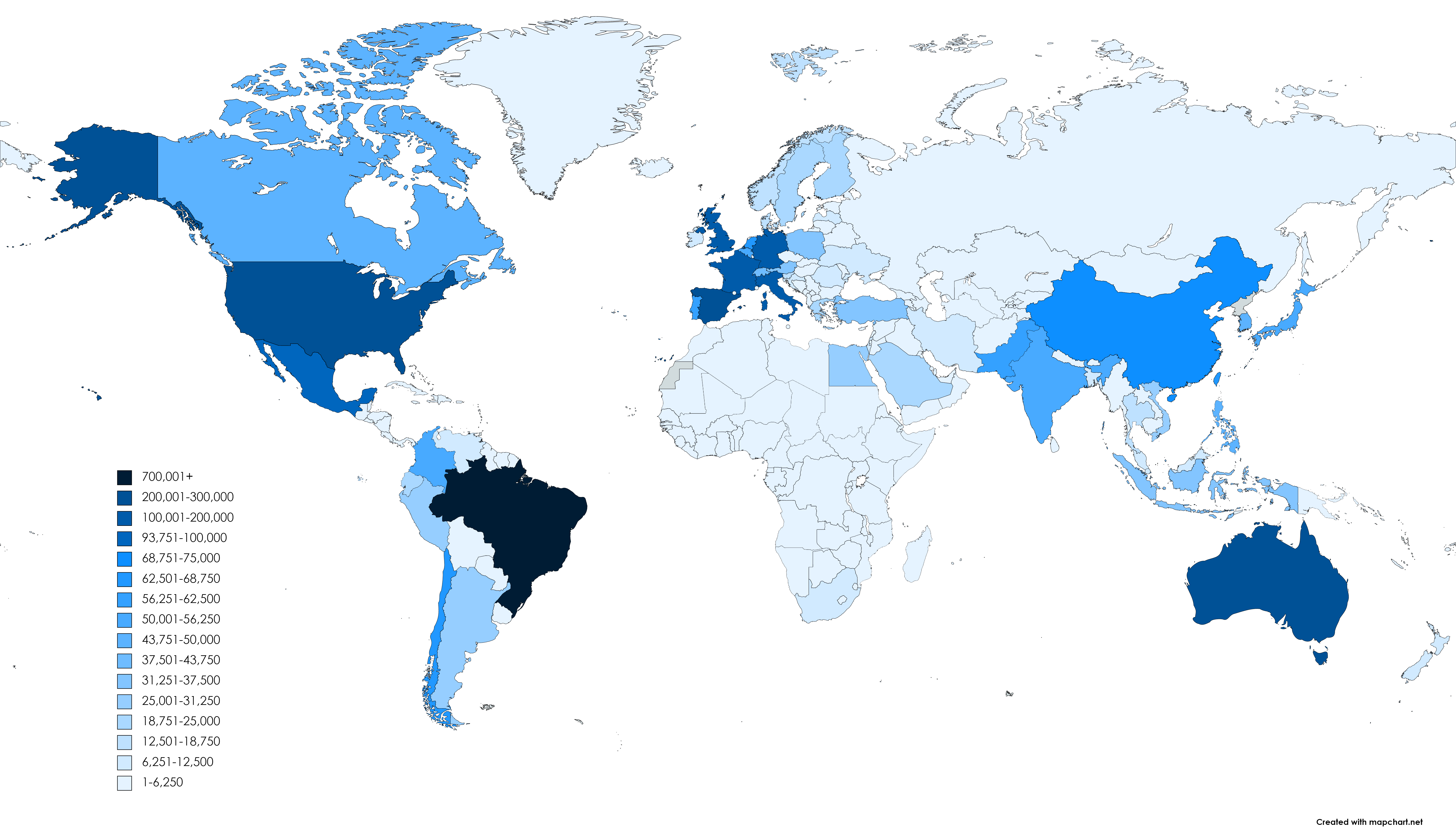An analysis of the contents of PEDro in the 6 February 2023 update is presented on this page. These data will be updated annually, so the next update is planned for February 2024.
On 6 February 2023 PEDro contained 57,660 reports of randomised controlled trials, systematic reviews and evidence-based clinical practice guidelines. There were 43,946 trials, 12,975 reviews, and 739 guidelines. The graph below illustrates the cumulative number of trials, reviews and guidelines available each year.

PEDro indexes reports of trials, reviews and guidelines for all areas of physiotherapy. The graph below illustrates the number of trials, reviews and guidelines available for each area of physiotherapy. Musculoskeletal and cardiothoracics had the largest quantity of trials, reviews and guidelines. Note that this graph is based on coding for 56,581 records with complete data (1,079 records are in-process, so have not been coded for area of physiotherapy yet). Each trial, review and guideline can be coded for more than one area of physiotherapy, so the total number of reports in this graph adds to more than 56,581.

Trial reports indexed on PEDro are rated with a checklist called the “PEDro scale”. The PEDro scale was developed to help PEDro users rapidly identify trials that are likely to be internally valid and have sufficient statistical information to guide clinical decision-making. Each trial report is given a total PEDro score, which ranges from 0 to 10. The graph below illustrates the number of trial reports scoring each total PEDro score. The average total PEDro score is 5.2, with a standard deviation of 1.6. 40% of trial reports are of moderate to high quality, scoring ≥ 6/10 on the PEDro scale. Note that this graph is based on coding for 42,980 records with complete data (1,079 trial reports are in-process, so have not been rated using the PEDro scale yet).

The graph below illustrates the percentage of trial reports satisfying each item of the PEDro scale. The majority of trials use random allocation (97%), report between group comparisons (94%), and report mean and variability data (91%). Few trials blind the subjects (6%) or therapists (1%), use concealed allocation (28%), and use intention to treat analysis (29%). Note that this graph is based on coding for 42,980 records with complete data (1,079 reports are in-process, so have not been rated using the PEDro scale yet).

There is no language restriction for indexing reports of trials, reviews and guidelines on PEDro. The graph below illustrates the number of records by language of publication. Reports were published in a total of 20 different languages. English was the most prevalent language of publication (92.0% of reports), followed by Chinese (4.8%), German (1.0%) and Spanish (0.5%).

During 2022 PEDro was used to answer 3,836,164 clinical questions. This means that a new search was initiated every 7 seconds, on average, during 2022. The graph below illustrates the number of new PEDro searches performed each month during 2022.

PEDro users were from over 211 countries. The five countries with the highest usage were:
- 25% Brazil
- 7% Spain
- 7% United States of America
- 6% Australia
- 5% France
A heat map of the PEDro searches performed during 2022 is illustrated below.




